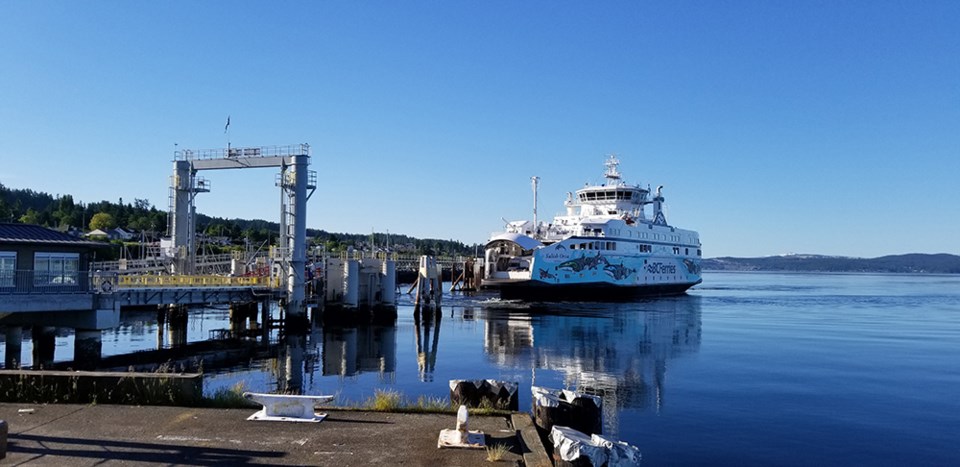Provincial government investment in the BC Ferries system will help keep annual fare increases much lower than the preliminary price cap announced by the BC Ferry Commission, according to Powell River-Sunshine Coast MLA Nicholas Simons.
Simons said the provincial government has prioritized affordability for ferries and recently announced a $500 million investment to keep fares at a manageable level.
“So, we won’t be seeing a 9.2 per cent increase each year over the four years,” said Simons. “We will probably see around a maximum of about three per cent. The funding that the province and the ministry of transportation and infrastructure announced is going to ensure that when the final price cap is announced in September, that it will not be that staggering amount.”
Simons said with four ferries in his constituency, in addition to the contracted services to Gambier and Keats islands, the funding from the province is going to be helpful.
“Nobody would want to see a 42 per cent increase over four years, which would be the cumulative impact of that, so keeping fares relatively affordable is a priority for people and businesses.”
When asked about whether the government might take back BC Ferries, Simons said the focus is on making sure the services are what communities need.
“The current system that is in place now has been in place for 17 years now, so I don’t expect there will be major changes with respect to governance,” said Simons. “We have changed legislation to restore public interest into the mandate of the ferries. With that, we’ve seen some evidence that public interest is being protected.”
On March 31, the BC Ferry Commission announced its preliminary decision on the price cap for BC Ferries’ next four-year performance term. According to a media release, this preliminary decision, if finalized, would allow average ferry fares to increase by a maximum of 9.2 per cent annually from April 1, 2024 to March 31, 2028. The release stated that the final decision, which will take into account the recently announced additional provincial funding of $500 million, will be confirmed on September 30 of this year.
“Facing labour difficulties and high inflation, BC Ferries is emerging from the current performance term in less-robust financial shape than initially expected,” stated commissioner Eva Hage. “The next four years will bring significant additional challenges.
“Continued labour supply issues, rising fuel prices, escalating costs associated with maintaining an aging fleet, and a 12-year, $5.2 billion proposed capital plan driven by a need to replace vessels, will create substantial pressure. Given this, we believe that a price cap of 9.2 per cent is appropriate and necessary to allow BC Ferries to meet the demands of the coming performance term.”
Proposed prices
The release stated that the proposed maximum increase marks a sharp departure from the previous two price caps of 2.3 per cent and 1.9 per cent.
“Although we believe that a higher price cap is necessary to ensure BC Ferries’ financial stability, it will not come without higher expectations,” stated Hage. “The corporation must demonstrate good fiscal management and find a solid footing in which expenses align with revenues. To that end, we are requiring BC Ferries to provide us with a plan that sets out the steps it will take, in consultation with the province, to ensure a financially sustainable, reliable and affordable ferry system over the long term.”
BC Ferries president and chief executive officer Nicholas Jimenez stated that he wanted to assure customers, employees and partners that ferry fares will not be going up 9.2 per cent per year for the next four years.
“What the commission has signalled is not a final outcome, but rather one step in a much longer process that is ongoing and won’t culminate until September, when a final price cap will be set by that independent office,” stated Jimenez. “Key to arriving at that final figure will be factoring in government’s recent $500 million investment that is expected to maintain average rate increases in the three per cent range.”



